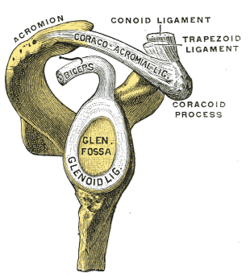The word first appears as praeputium in the Latin of ancient Rome; the derivation of praeputium is a matter of debate, possibly originating from the Latin prae (before) and the Greek posthe (penis). Or, more interestingly, it may be related the the Latin puteo ("I stink") in reference to the noisome accumulation of smegma, the sebaceous secretion that would collect under the prepuce of a habitually underwashed Roman male (notwithstanding the Roman baths, which not did not become an integral part of Romanic culture until the 2nd century BC, a full 300 years into the Roman Republic).
It has also been suggested that prepuce stems from praeputare ("to cut away", related to amputaere). However, the Romans used praeputium long before they became aware of the Jewish rite of circumcision.
The prepuce is referred to as the foreskin in males and the clitoral hood in females (although this latter term is not officially recognized by the Terminologia Anatomica). Its superior surface is skin and its inner surface is a mucosa; is this sense its organization is not unlike that of an eyelid.
During sexual excitement the prepuce retracts, exposing the glans. Given its sexual sensitivity, it can play role the tactile stimulation associated with sexual pleasure.
In a sexually mature man, the surface area of the intact prepuce averages about around 100 square centimeters, about that of a 3x5 index card.
| Michelangelo's David in the Accademia Gallery, Florence, Italy. Photo by Ussaro Etneo www.flickr.com/photos/ussaro/252538573/ |






